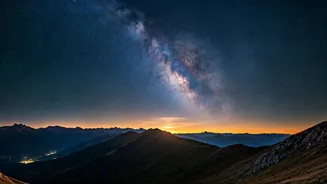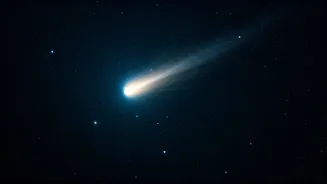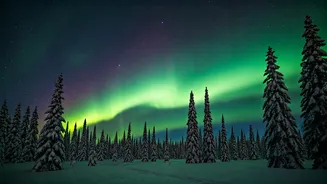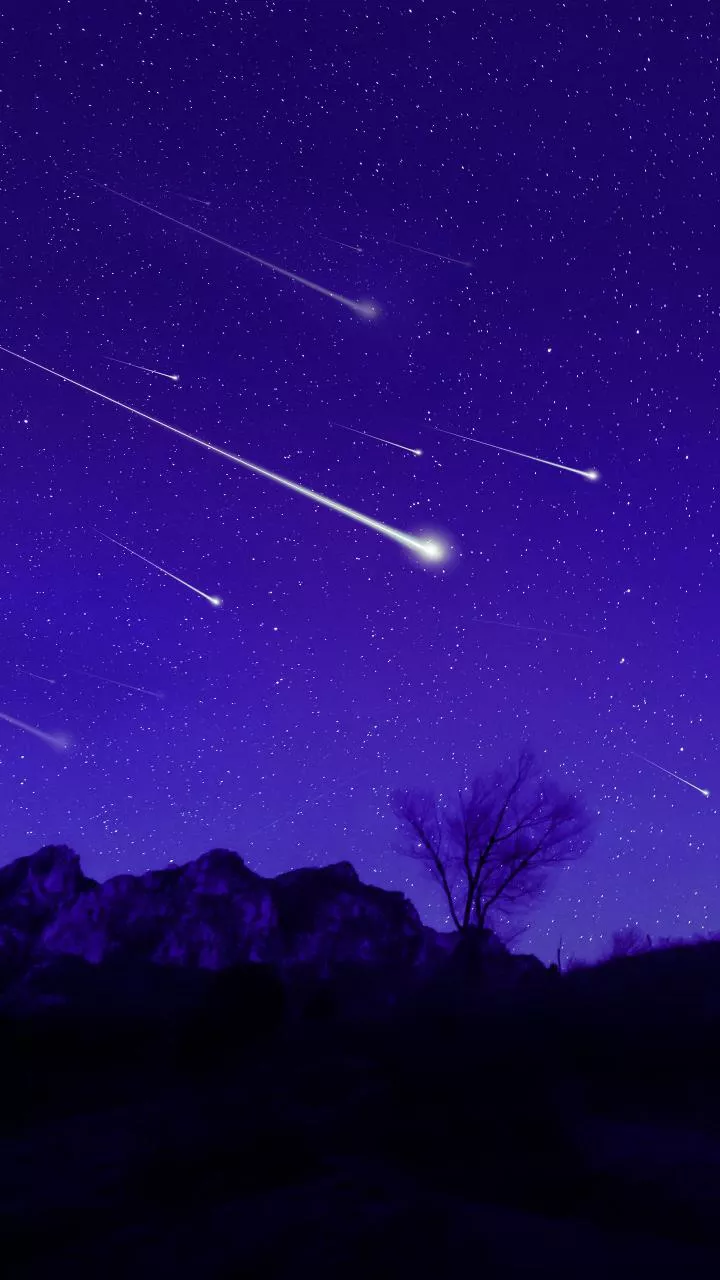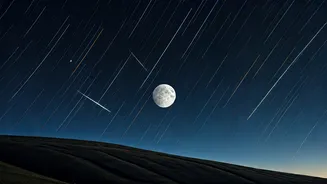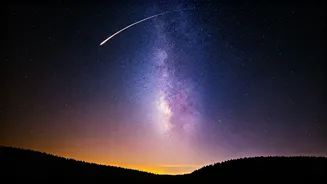Mercury's Evening Ascent
At the beginning of November 2025, the planet Mercury will ascend to its highest point in the evening sky. This presents an excellent chance to spot the often
elusive planet without the aid of a telescope. Mercury’s visibility will vary based on your location. Observers closer to the equator will likely have a clearer view as the planet climbs higher in their sky. At higher latitudes, however, catching a glimpse of Mercury might prove challenging, as it could remain below the horizon. The best time to look out for it will be when the sky is dark and clear, away from city lights, to maximize your chances of seeing this small but fascinating planet.
Southern Taurids Peak
The Southern Taurid meteor shower, known for its fireballs, is set to peak from November 4th to 5th, 2025. Although typically producing around five meteors per hour, this year is anticipated to be a ‘fireball-swarm’ year, promising brighter, more frequent meteors. This makes it an exciting spectacle for those who enjoy watching shooting stars. The shower’s second peak will occur in early November, providing ample opportunity to witness this display. For optimal viewing, skywatchers should focus on the evening of November 4th through the early morning hours of November 5th. Finding a location with minimal light pollution and a clear view of the sky will enhance your experience.
Super Beaver Moon
The full moon on November 5th is the largest full moon of the year, a true supermoon. Historically called the ‘Beaver Moon’, it marks the time when beavers begin constructing their defenses for winter, and it offers an excellent viewing opportunity for sky observers. The term 'supermoon' refers to when the moon is at its perigee, the closest point to Earth in its orbit, coinciding with the full moon phase. This proximity makes the moon appear larger and brighter in the sky than usual. Observers should try to catch the supermoon when it is rising or setting for the most dramatic effect, as the moon illusion can enhance its apparent size.
Moon Meets Pleiades
On the night following the supermoon, stargazers can anticipate another celestial treat: the moon passing close to the Pleiades star cluster, also known as the Seven Sisters. The moon will pass within a degree of the cluster, offering a fantastic opportunity for photographers. The Pleiades, or Messier 45, is a group of over 1,000 hot, young stars. It's an easily recognizable and beautiful sight in the night sky. The juxtaposition of the bright moon near the delicate light of the Pleiades will make for a stunning visual display. To appreciate this conjunction, ensure a clear view of the night sky, ideally away from city lights to fully enjoy the sight.
Northern Taurids Peak
The Northern Taurid meteor shower will peak from the evening of November 11th into the morning of November 12th. This shower, following the Southern Taurids, provides another opportunity to witness shooting stars. The American Meteorological Society anticipates that the shower will be visible during this period. The overlap of the two Taurid showers increases the likelihood of bright fireballs, making this an especially exciting time for meteor-watching enthusiasts. If both showers coincide, the chances of seeing exceptionally bright meteors are heightened. The key is to be patient and keep your eyes on the sky, away from any light pollution, to make the most of this celestial display.
Leonids Meteor Shower
The Leonid Meteor Shower is expected to peak during the night of November 17th and the morning of November 18th. Earth will be passing through the debris of Comet Tempel-Tuttle, resulting in a flurry of shooting stars. Fortunately, the waning crescent moon will provide a dark sky, enhancing the visibility of the meteors. Under the right conditions, the Leonids can produce spectacular shooting star displays. To maximize your viewing experience, find a dark location away from light pollution and allow your eyes to adjust to the darkness. With a bit of luck and a clear sky, you might be rewarded with a memorable celestial spectacle.
Micro New Moon
On November 20th, a ‘micro’ new moon will occur. Since this new moon will fall close to the lunar apogee, the Moon's farthest point from Earth, it will practically disappear from the night sky. This absence of moonlight creates ideal conditions for observing faint deep-sky objects. These include star clusters, nebulae, and distant galaxies. Stargazers can use binoculars or backyard telescopes to enjoy the dark skies, which are perfect for observing these objects. This new moon phase allows for an unobstructed view of the night sky, making it an excellent time to explore the universe’s more elusive treasures, which are normally difficult to see.
Uranus at Opposition
November 21st marks Uranus’s opposition, when the planet is directly opposite the Sun in the sky, providing the brightest view of this distant planet. Uranus, the furthest planet in our solar system, will appear as a star with a magnitude of +5.6. This allows viewers with binoculars to spot the planet within the constellation Aries. The opposition of Uranus offers a rare chance to see this planet easily. It is an excellent opportunity for those without a telescope to locate and observe it with binoculars. Clear skies and a little patience will be needed to locate Uranus.
Hyades in View
The Hyades star cluster reaches its highest point in the sky around midnight in late November. This V-shaped cluster, located in the constellation Taurus, forms the bull's face, situated just 150 light-years from Earth. To observe, wait until the cluster reaches its highest point in the sky around midnight. The Hyades is a striking example of an open star cluster, easily spotted in the night sky. With binoculars or a small telescope, the cluster offers a fascinating view of a family of stars. The Hyades' visibility, combined with the other November celestial events, adds to the month's overall appeal for stargazers.
Winter/Summer Constellations
As November progresses, the shift of seasons will start to show in the night sky. The Northern Hemisphere will begin to see the winter constellations emerge. Simultaneously, the Southern Hemisphere will start to welcome summer constellations. This seasonal shift creates captivating skies throughout the month. Famous constellations such as Orion and Taurus will come into view. This transition marks the changing of the guard in the night sky, offering different celestial patterns to admire depending on your location. The month's progression, therefore, presents an ever-changing spectacle, providing something new and exciting to observe night after night.
